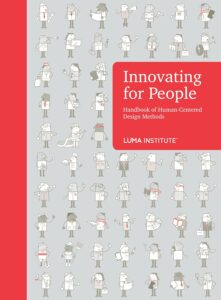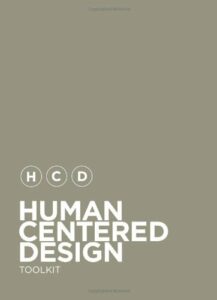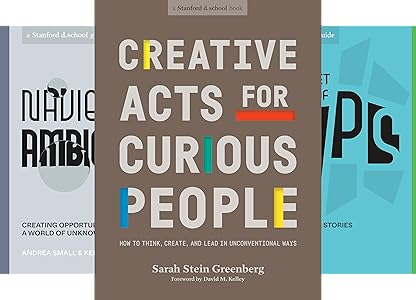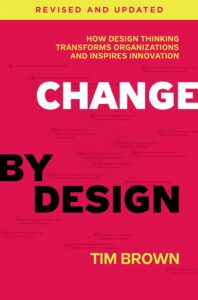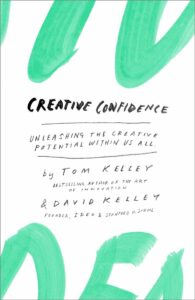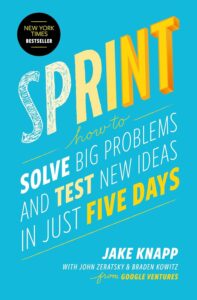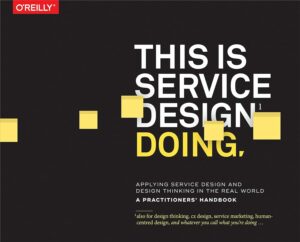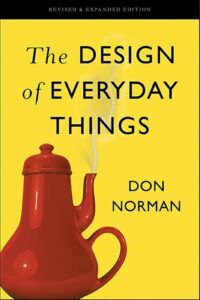Essential reads for mastering human-centered design principles
Human-centered design (HCD) is a creative approach to problem-solving that starts with the people you’re designing for and ends with new solutions tailored to suit their needs. This approach has become increasingly popular in various industries, from tech to healthcare to education. For those looking to dive deeper into human-centered design, we invite you to refer to our previous article with human-centered design resources, then enjoy this curated list of some of the most popular and highly rated books on the topic. Each of these books provides valuable insights, methodologies, and case studies to help you implement human-centered design in your work.
1. “The Field Guide to Human-Centered Design” by IDEO.org
The original Field Guide by IDEO provides a framework to understanding and practicing human-centered design. The clear methodology, case studies, and worksheets can help you master these techniques and apply them to your own project.
Amazon Description:
The Field Guide to Human-Centered Design is your textbook to practicing human-centered design for social innovation. Written for both new and experienced practitioners, the Field Guide reveals IDEO.org’s process with the key mindsets that underpin how we think about design for the social sector, 57 clear-to-use design methods, worksheets and case studies of human-centered design in action. Since it’s launch in 2015, The Field Guide to Human-Centered Design has been purchased by over 10,000 people around the world. IDEO.org is a 501(c)(3) nonprofit design studio that designs products and services alongside organizations that are committed to creating a more just and inclusive world.
2. “Innovating for People Handbook of Human-Centered Design Methods” by LUMA Institute
This useful human-centered design guide from the LUMA Institute discusses how to apply human-centered design principles to innovation and problem-solving. The book provides a collection of practical methods and tools designed to help teams and organizations understand and address user needs effectively.
Amazon Description:
Innovation is an economic imperative that calls for more people to be innovating, more often. This handbook equips people in various lines of work to become more innovative. It provides specific guidance for bringing new and lasting value into the world.
The key ingredient to successful innovation is the everyday practice of Human-Centered Design: the discipline of developing solutions in the service of people. Every story of a good innovation — whether it’s a new product, a new service, a new business model or a new form of governance — begins and ends with people. It starts with careful discernment of human needs, and concludes with solutions that meet or exceed personal expectations.
3. “Human-Centered Design Toolkit: An Open-Source Toolkit To Inspire New Solutions in the Developing World” by IDEO.org
This updated guide from IDEO.org is a practical, step-by-step manual for applying human-centered design to social impact projects. It provides worksheets, case studies, and tips on how to navigate each stage of the design process, from inspiration to implementation.
Amazon Description:
For years, businesses have used human-centered design to develop innovative solutions. Why not apply the same approach to overcome challenges in the nonprofit world? This project, funded by International Development Enterprise (IDE) as part of a grant from the Bill & Melinda Gates Foundation, sought to provide NGOs and social enterprises with the tools to do just that. IDEO, in collaboration with nonprofit groups ICRW and Heifer International, developed the HCD Toolkit to help international staff and volunteers understand a community’s needs in new ways, find innovative solutions to meet those needs, and deliver solutions with financial sustainability in mind. The HCD Toolkit was designed specifically for NGOs and social enterprises that work with impoverished communities in Africa, Asia, and Latin America. The free kit, available for download here, walks users through the human-centered design process and supports them in activities such as building listening skills, running workshops, and implementing ideas. The process has led to innovations such as the HeartStart defibrillator, Cleanwell natural antibacterial products, and the Blood Donor System for the Red Cross — all of which have enhanced the lives of millions of people. The HCD toolkit has been used by organizations throughout the developing world, including Acumen Fund, AyurVAID, Heifer International, ICRW, IDE, Micro Drip, and VisionSpring.
4. Stanford d.school Library
The Stanford d.school library collection includes several influential books on design thinking and innovation. They provide practical approaches and frameworks that align with the principles taught at Stanford’s d.school, helping individuals and organizations tackle complex challenges and develop impactful solutions.
5. “Change by Design: How Design Thinking Transforms Organizations and Inspires Innovation” by Tim Brown
In “Change by Design,” Tim Brown, CEO of IDEO, explains how design thinking—a methodology based on human-centered design—can be applied to a variety of industries to foster innovation. The book is filled with examples from IDEO’s work and provides practical advice on how organizations can use design thinking to solve complex problems.
Amazon Description:
The subject of “design thinking” is the rage at business schools, throughout corporations, and increasingly in the popular press—due in large part to the work of IDEO, a leading design firm, and its celebrated CEO, Tim Brown, who uses this book to show how the techniques and strategies of design belong at every level of business.
The myth of innovation is that brilliant ideas leap fully formed from the minds of geniuses. The reality is that most innovations come from a process of rigorous examination through which great ideas are identified and developed before being realized as new offerings and capabilities.
Change by Design explains design thinking, the collaborative process by which the designer’s sensibilities and methods are employed to match people’s needs, not only with what is technically feasible, but what is viable to the bottom line. Design thinking converts need into demand. It’s a human-centered approach to problem solving that helps people and organizations become more innovative and more creative.
Introduced a decade ago, the concept of design thinking remains popular at business schools, throughout corporations, and increasingly in the popular press—due in large part to work of IDEO, the undisputed world leading strategy, innovation, and design firm headed by Tim Brown. As he makes clear in this visionary guide—now updated with addition material, including new case studies, and a new introduction—design thinking is not just applicable to so-called creative industries or people who work in the design field. It’s a methodology that has been used by organizations such as Kaiser Permanente, to increase the quality of patient care by re-examining the ways that their nurses manage shift change, or Kraft, to rethink supply chain management.
6. “Creative Confidence: Unleashing the Creative Potential Within Us All” by Tom Kelley and David Kelley
Written by the founders of IDEO, “Creative Confidence” is a guide to unlocking the creative potential that lies within each person. The book focuses on the belief that everyone has the ability to be creative and that this creativity can lead to innovative solutions through human-centered design.
Amazon Description:
Too often, companies and individuals assume that creativity and innovation are the domain of the “creative types.” But two of the leading experts in innovation, design, and creativity on the planet show us that each and every one of us is creative. In an incredibly entertaining and inspiring narrative that draws on countless stories from their work at IDEO, the Stanford d.school, and with many of the world’s top companies, David and Tom Kelley identify the principles and strategies that will allow us to tap into our creative potential in our work lives, and in our personal lives, and allow us to innovate in terms of how we approach and solve problems. It is a book that will help each of us be more productive and successful in our lives and in our careers.
7. “Sprint: How to Solve Big Problems and Test New Ideas in Just Five Days” by Jake Knapp, John Zeratsky, and Braden Kowitz
“Sprint” provides a detailed framework for using design sprints—a five-day process for answering critical business questions through design, prototyping, and testing ideas with customers. The book is based on experiences from Google Ventures and provides a step-by-step guide to implementing this approach.
Amazon Description:
Entrepreneurs and leaders face big questions every day: What’s the most important place to focus your effort, and how do you start? What will your idea look like in real life? How many meetings and discussions does it take before you can be sure you have the right solution?
Now there’s a surefire way to answer these important questions: the Design Sprint, created at Google by Jake Knapp. This method is like fast-forwarding into the future, so you can see how customers react before you invest all the time and expense of creating your new product, service, or campaign.
In a Design Sprint, you take a small team, clear your schedules for a week, and rapidly progress from problem, to prototype, to tested solution using the step-by-step five-day process in this book. A practical guide to answering critical business questions, Sprint is a book for teams of any size, from small startups to Fortune 100s, from teachers to nonprofits. It can replace the old office defaults with a smarter, more respectful, and more effective way of solving problems that brings out the best contributions of everyone on the team—and helps you spend your time on work that really matters.
8. “This is Service Design Doing: Applying Service Design Thinking in the Real World” by Marc Stickdorn, Markus Edgar Hormess, Adam Lawrence, and Jakob Schneider
This book focuses on service design, an application of human-centered design to services. It provides a comprehensive overview of service design tools and methods, offering practical guidance on how to apply them in various contexts. The book includes case studies and insights from experts to help readers understand how to create services that are both functional and delightful.
Amazon Description:
How can you establish a customer-centric culture in an organization? This is the first comprehensive book on how to actually do service design to improve the quality and the interaction between service providers and customers. You’ll learn specific facilitation guidelines on how to run workshops, perform all of the main service design methods, implement concepts in reality, and embed service design successfully in an organization.
Great customer experience needs a common language across disciplines to break down silos within an organization. This book provides a consistent model for accomplishing this and offers hands-on descriptions of every single step, tool, and method used. You’ll be able to focus on your customers and iteratively improve their experience.
9. “The Design of Everyday Things” by Don Norman
Don Norman’s classic book is a must-read for anyone interested in design. It delves into how design serves as the communication between an object and the user, emphasizing the importance of usability and human-centered design principles. Norman argues that good design is not just about aesthetics but also about understanding the psychology of the user, ensuring products are easy to use and understand.
Amazon Description:
Even the smartest among us can feel inept as we fail to figure out which light switch or oven burner to turn on, or whether to push, pull, or slide a door. The fault, argues this ingenious — even liberating — book, lies not in ourselves, but in product design that ignores the needs of users and the principles of cognitive psychology. The problems range from ambiguous and hidden controls to arbitrary relationships between controls and functions, coupled with a lack of feedback or other assistance and unreasonable demands on memorization.
The Design of Everyday Things shows that good, usable design is possible. The rules are simple: make things visible, exploit natural relationships that couple function and control, and make intelligent use of constraints. The goal: guide the user effortlessly to the right action on the right control at the right time.
10. “Lean UX: Designing Great Products with Agile Teams” by Jeff Gothelf and Josh Seiden
The field of UX also has some great human-centered design books to help with your practice. “Lean UX” integrates lean and agile principles with user experience design, emphasizing collaboration and iterative design processes. The book is particularly useful for teams working in fast-paced environments where speed and flexibility are essential. It provides strategies for creating user-centered designs in a lean and efficient manner.
Amazon Description:
Lean UX is synonymous with modern product design and development. By combining human-centric design, agile ways of working, and a strong business sense, designers, product managers, developers, and scrum masters around the world are making Lean UX the leading approach for digital product teams today.
In the third edition of this award-winning book, authors Jeff Gothelf and Josh Seiden help you focus on the product experience rather than deliverables. You’ll learn tactics for integrating user experience design, product discovery, agile methods, and product management. And you’ll discover how to drive your design in short, iterative cycles to assess what works best for businesses and users. Lean UX guides you through this change–for the better.
Top Human-Centered Design Books Conclusion
These human-centered design books offer a wealth of knowledge on human-centered design and are great resources for anyone looking to deepen their understanding of this powerful approach to innovation. Whether you’re a beginner or a seasoned professional, these books provide valuable insights and practical tools to help you design solutions that truly meet the needs of your users. For more resources on design thinking and innovation, be sure to explore these other articles on our website:


